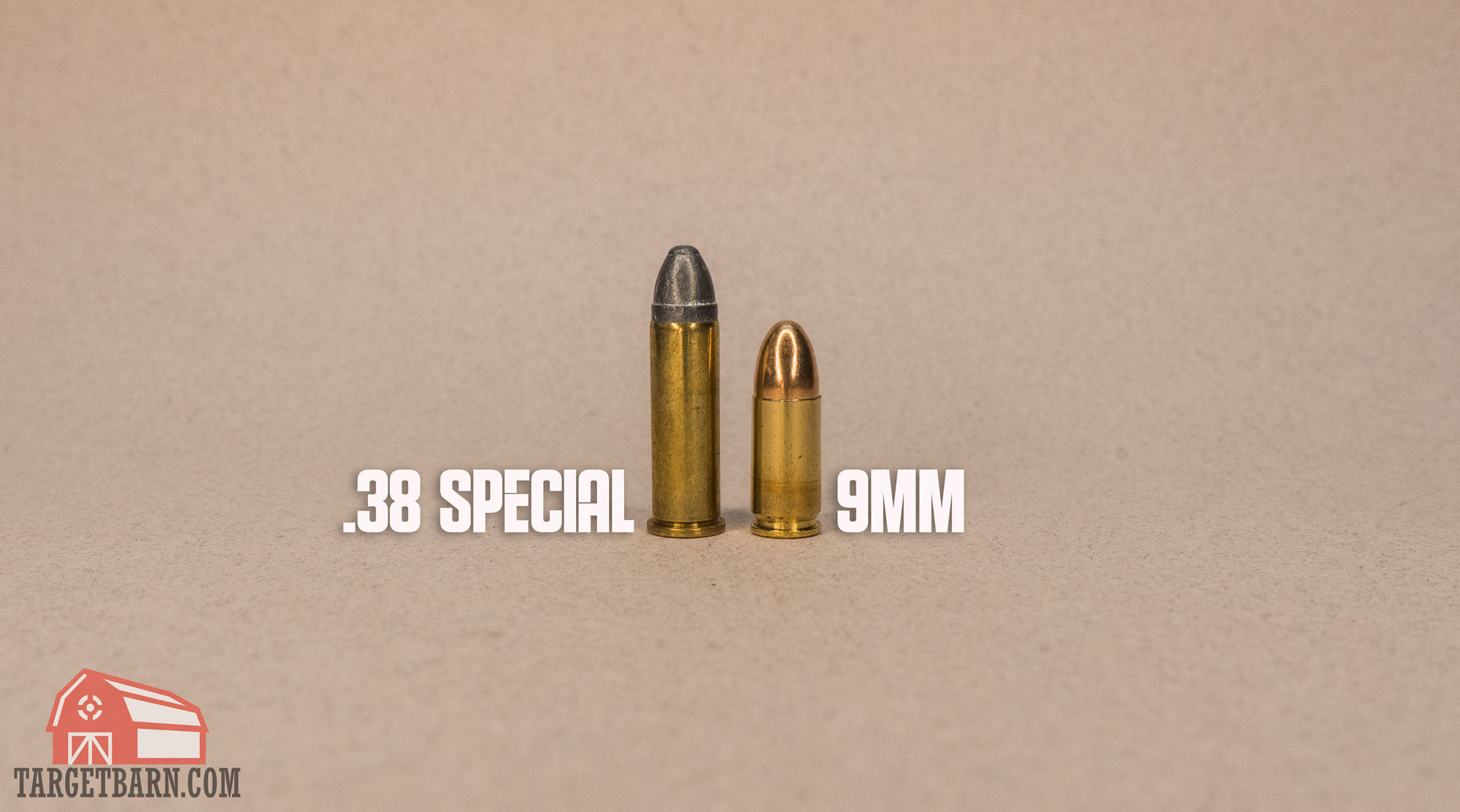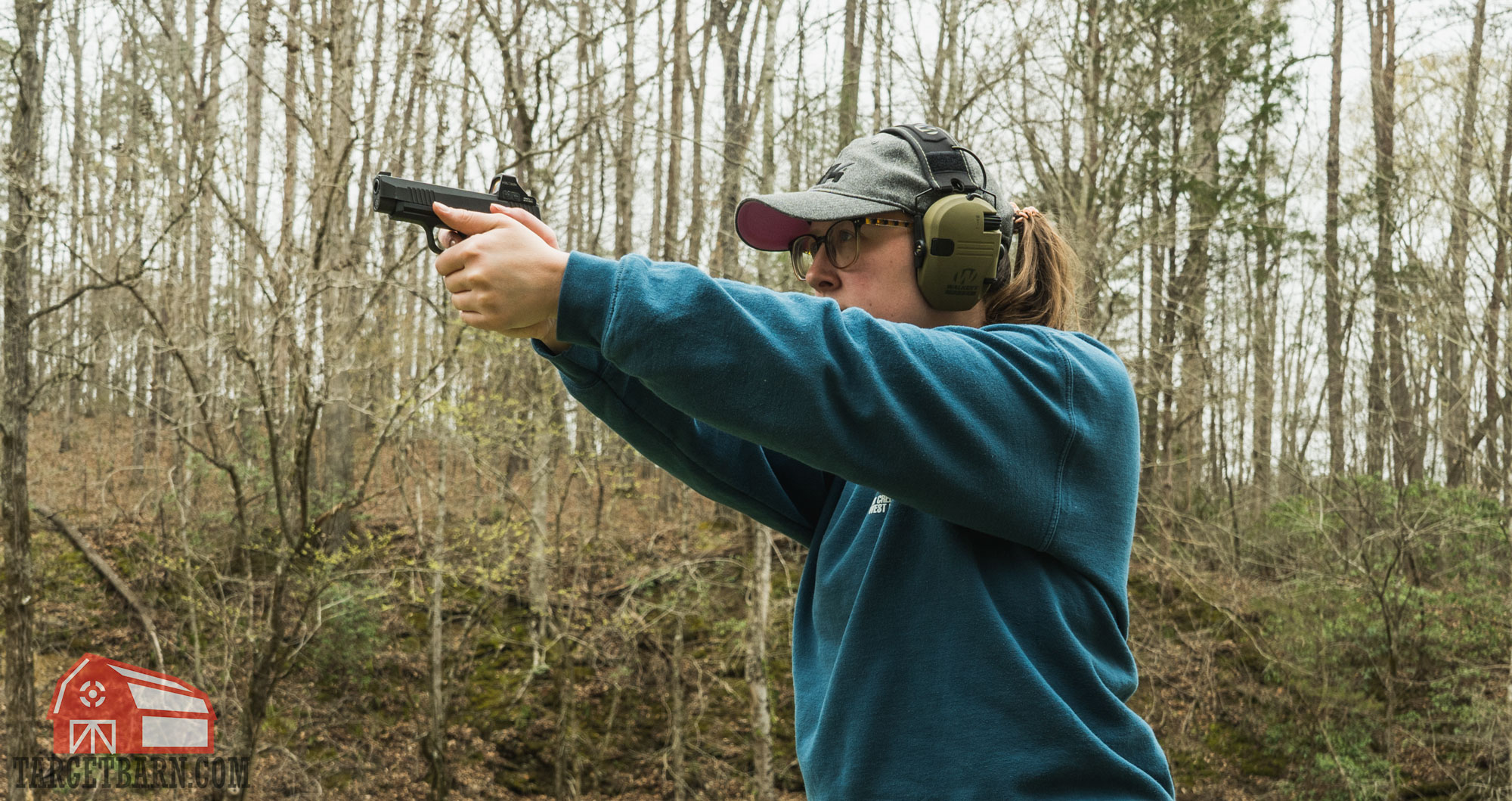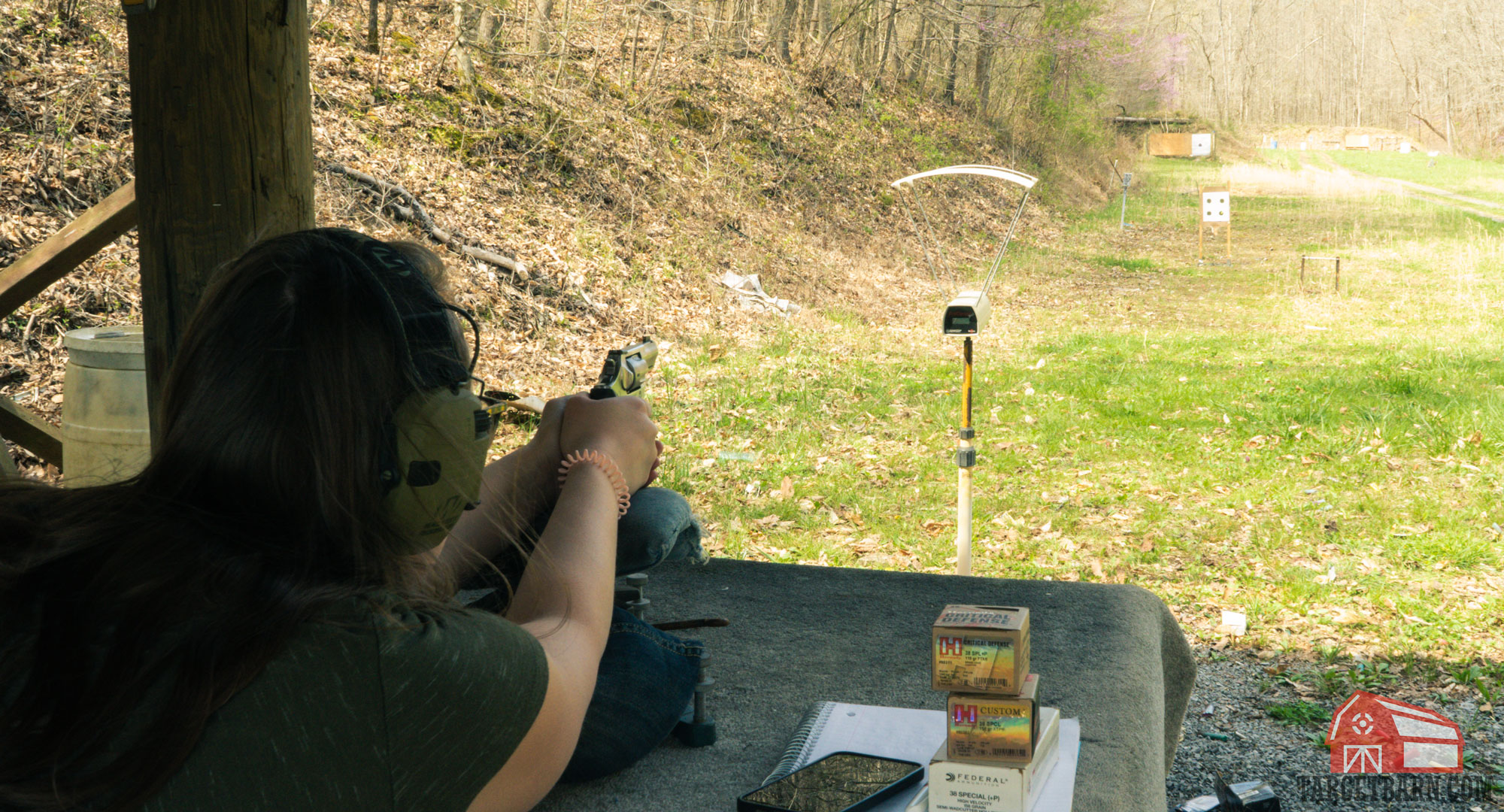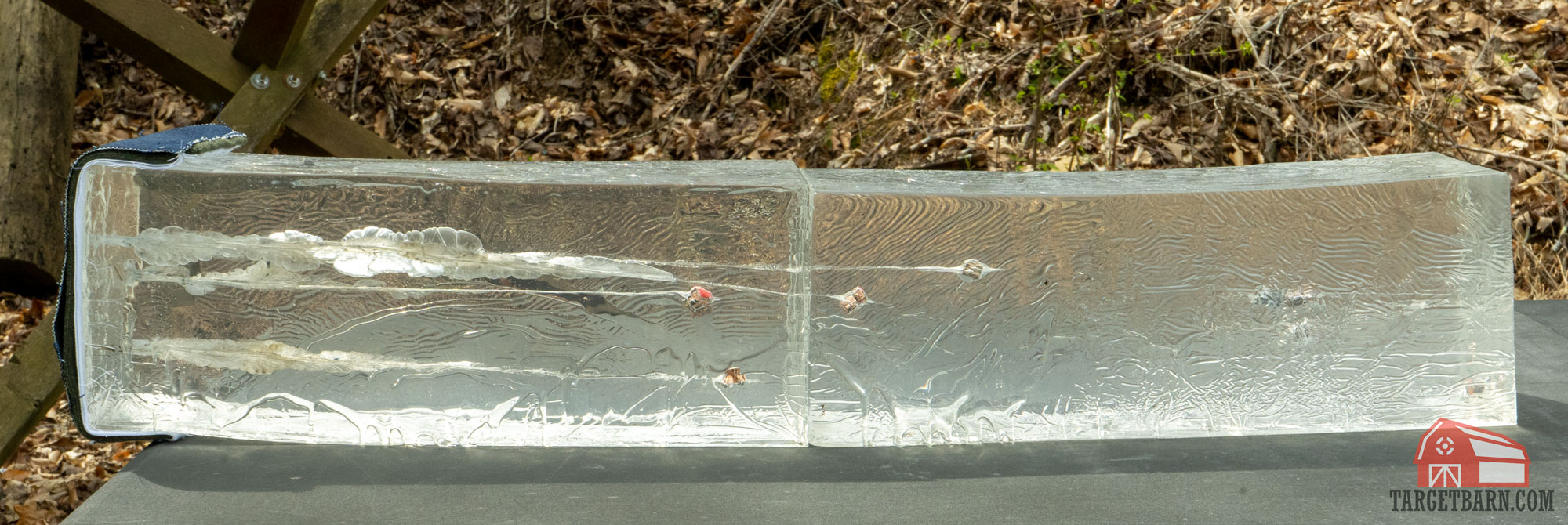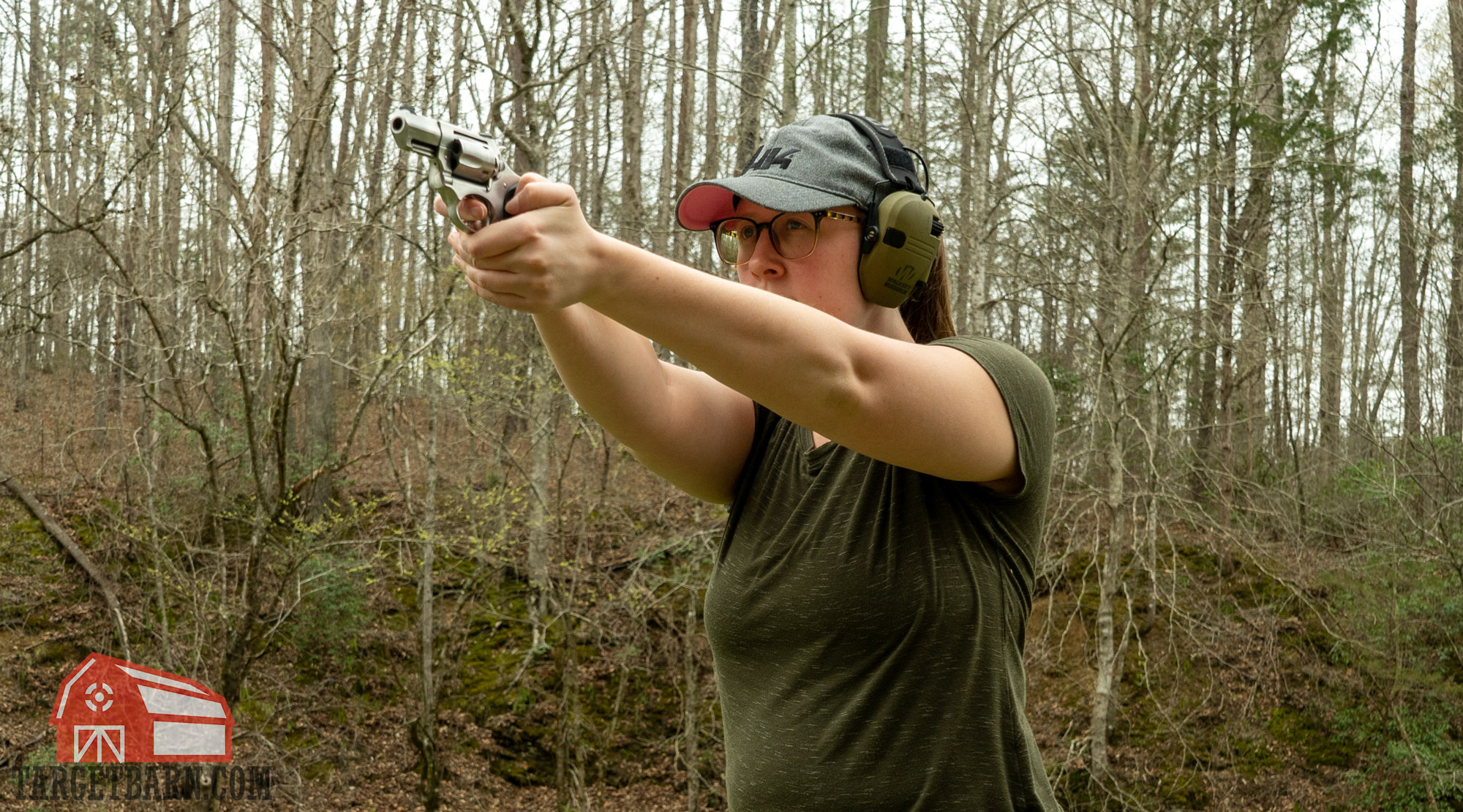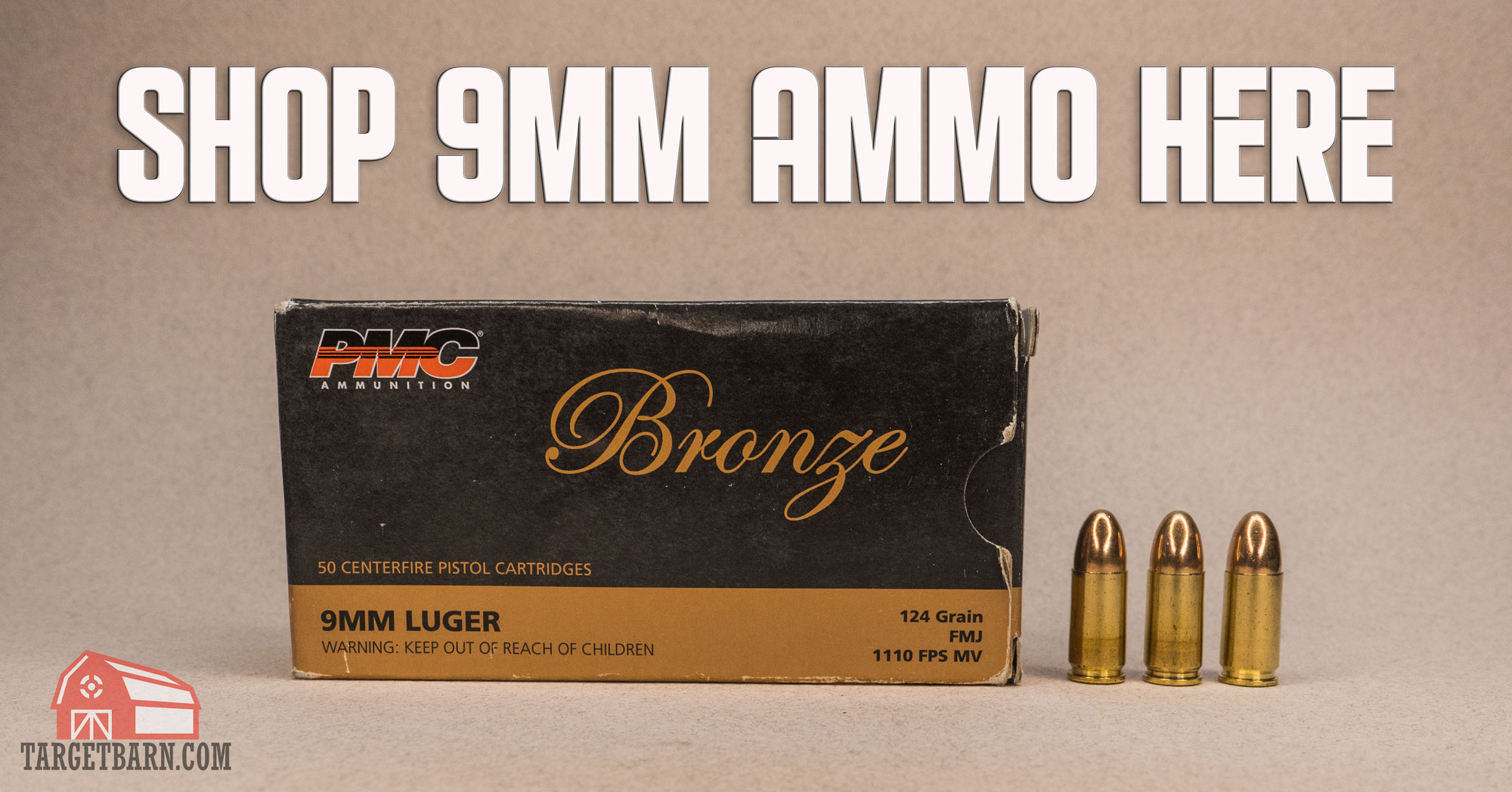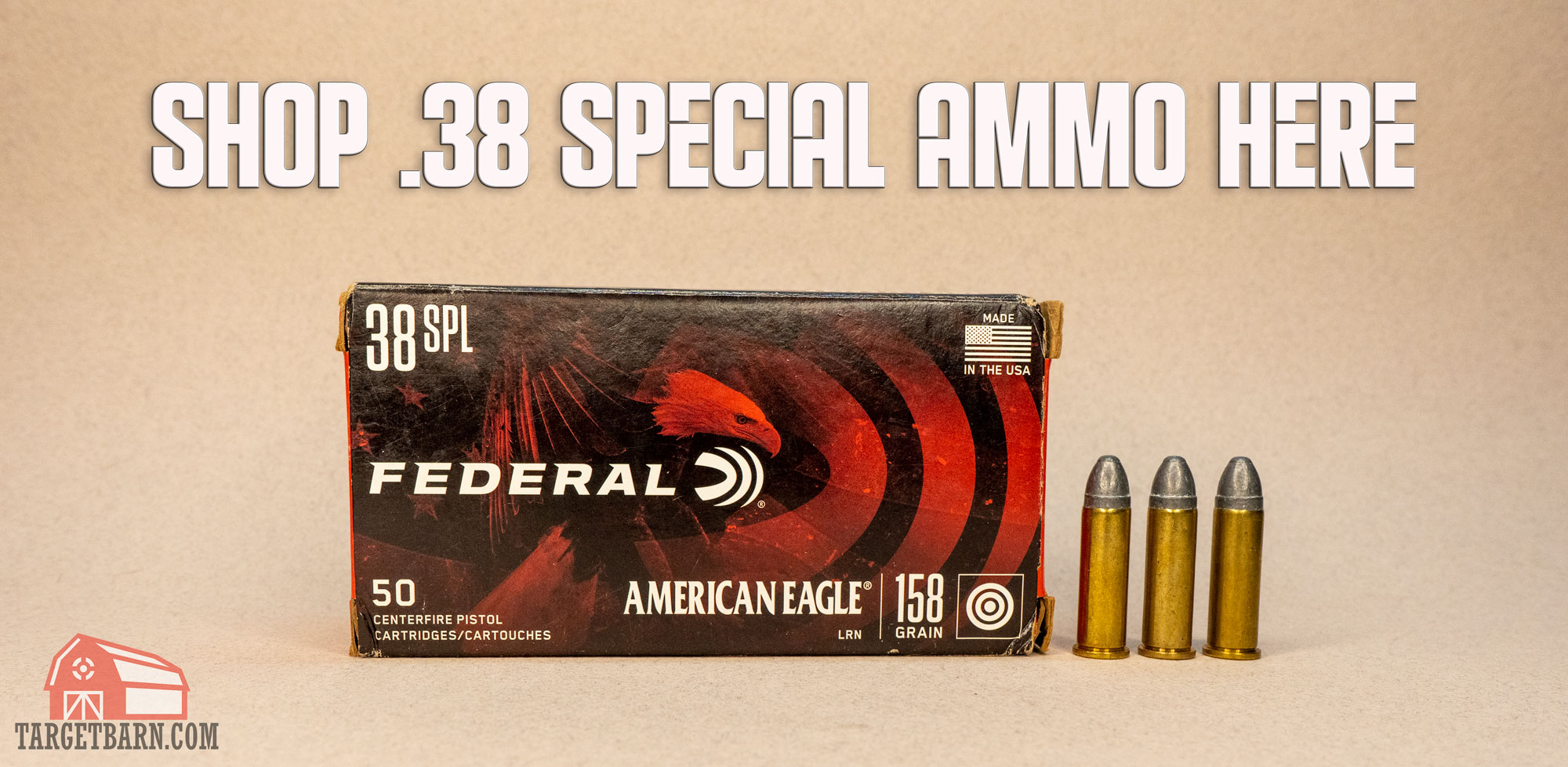It’s hard not to compare the .38 Special vs. 9mm. Both cartridges have had years of popularity for self defense, competition, and fun on the range.
Today, we’re going to look dive into the differences between the two rounds and see how they stack up for self defense.
.38 Special vs. 9mm Specifications
The basics of .38 Special vs. 9mm:
- .38 Special is a revolver round; 9mm is typically a semi-auto round
- .38 Special is rimmed; 9mm is rimless
- .38 Special is taller than 9mm and has a larger case capacity
- Both calibers are popular for self defense and perform well in ballistic gel tests
- .38 Special concealed carry revolvers typically have 5-round capacity; 9mm concealed carry pistols typically have a 7-round+ capacity
| .38 Special | 9mm | |
|---|---|---|
| Designed | 1898 | 1901 |
| Designer | Smith & Wesson | Georg Luger |
| Place of Origin | United States | German Empire |
| Parent Cartridge | .38 Long Colt | 7.65x21mm Parabellum |
| Case Type | Rimmed, straight | Rimless, tapered |
| Bullet Diameter | .357" | .355" |
| Rim Diameter | .44" | .392" |
| Case Length | 1.155" | .754" |
| Overall Length | 1.550" | 1.169" |
| Common Bullet Weights | 100 to 147 grains | 100 to 158 grains |
| Maximum Pressure (SAAMI) | 17,500 psi | 34,084 psi |
.38 Special vs. 9mm History
Let’s take a look at how the two rounds came to existence.
.38 Special History
After the .38 Long Colt’s poor performance in the Philippines during the Spanish-American War, the U.S. government sought out a new revolver through Smith & Wesson. Smith & Wesson’s new cartridge had the same diameter as the .38 Long Colt, but with a heavier bullet and hotter black powder charge. Due to its popularity, Smith & Wesson soon offered this new round, the .38 Smith & Wesson Special, in smokeless powder loadings. Smith & Wesson’s new revolver had a medium-frame with a swing-out cylinder with manual ejection. This differed from the older top-break revolvers from Smith.
The .38 Special became the chosen service revolver caliber among American law enforcement agencies from the 1920s to the 1980s. The round also saw use in World War I, World War II, the Korean War, and the Vietnam War.
9mm History
Austrian firearm designer George Luger developed the 9mm cartridge in 1901. He worked for the German arms company Deutsche Waffen-und Munitionsfabriken (DWM) and had previously developed the 7.65x21mm cartridge for his Luger pistol.
The German Army wanted a larger cartridge than a .30 cal pistol round, so Luger went to work. He took the bottleneck out of the 7.65 round and put a .355 caliber bullet in it, creating the 9mm.
Gun Selection & Capacities
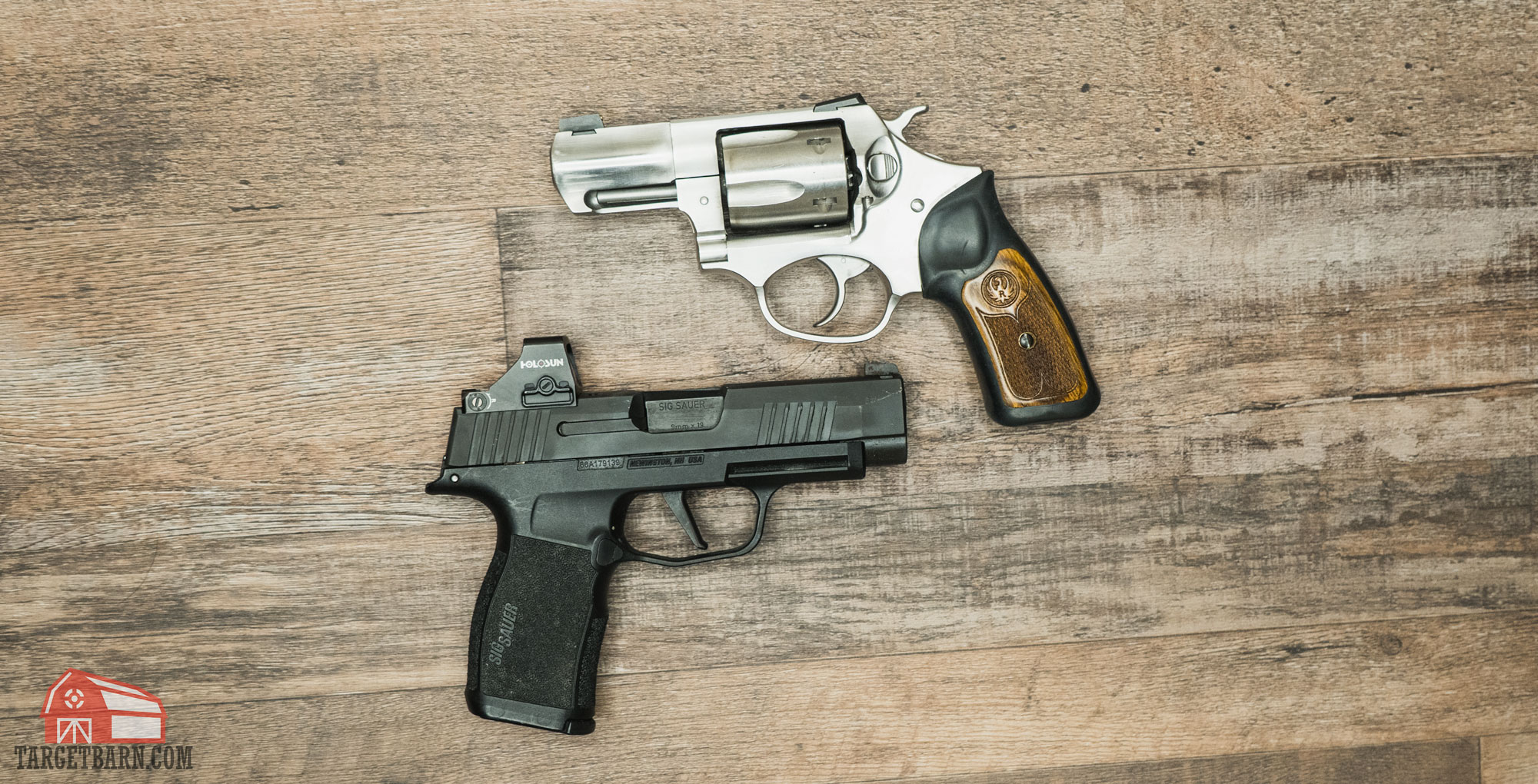
Now let’s look at the different gun options each caliber has.
.38 Special Gun Options
The .38 Special is a revolver caliber and there is a wide selection of revolvers on the market chambered in the round. You’re not likely to find a semi-auto handgun chambered in .38 Special, however you can find lever action rifles that accept the cartridge.
Every major manufacturer that produces revolvers has one chambered in .38 Special. One of the most common types of revolvers you’ll see for concealed carry is the snub nose. Snub nose revolvers have short barrels, usually under 3”. These smaller framed revolvers, like the Ruger LCR or a Smith & Wesson J-Frame, typically have a 5-round capacity.
There are also .38 revolvers with larger frames that have a capacity of up to 8 rounds, though most shooters won’t opt to conceal one. A perk of the .38 Special round is that you can shoot the cartridge out of revolvers chambered in .357 Magnum. This opens up an even wider variety of revolver options.
9mm Gun Options
The 9mm cartridge is the most popular self defense pistol cartridge in modern times. While most 9mm guns are semi-auto handguns, you can also find revolvers and carbines chambered in the cartridge. The 9mm’s popularity means there is no shortage of 9mm pistols on the market. For self defense, it’s easy to find a compact or subcompact 9mm pistol. Full size 9mm pistols are popular for competition, and some people choose to carry them. Some of the most common 9mm pistols for concealed carry include the Glock 43, Smith & Wesson M&P Shield, and Sig Sauer P365.
Because most 9mm pistols are semi-autos, they’ll have a higher capacity because they use magazines. On the smaller end, guns like the Ruger EC9s hold seven rounds in the magazine plus an additional round in the chamber. Many shooter conceal carry the Glock 19 which has magazine capacities from 15 rounds up to 33 rounds.
.38 Special vs. 9mm Recoil
The amount of recoil you feel when shooting a .38 Special vs. 9mm is going to be influenced by a few different factors. Those factors include the barrel length, weight and ergonomics of the gun, the ammo, and the shooter.
Lightweight handguns with shorter barrels tend to have snappier recoil than heavier, longer-barreled guns. So, if you’re shooting over-pressure (+P) ammo out of a snub nose revolver, the recoil is probably going to be pretty unpleasant. If you’re shooting a hotter load of ammo, that will have an effect on felt recoil as well.
Felt recoil can also differ from shooter to shooter based off experience level. Many shooters have the strength and proper shooting techniques to mitigate the felt recoil. If you’re new to shooting or are still developing a proper pistol grip, the recoil might affect you more than it would a more seasoned shooter.
That being said, neither the .38 Special or 9mm cartridges have especially offensive recoil when fired out of full-sized handguns. I personally find that they have similar amounts of recoil. Even when shooting out of compact and subcompact handguns, many shooters can learn to mitigate the recoil.
.38 Special vs. 9mm Ballistics
We tested the ballistics of the .38 Special vs. 9mm with some different self defense loads.
Velocity & Penetration
First, we wanted to see the velocities of these loads out of smaller guns that are popular for concealed carry. We shot 5 rounds of each loading, measuring their muzzle velocities with a chronograph.
Then we wanted to see how those same rounds might perform if used in a self-defense scenario. We decided to do some ballistic gel testing using Clear Ballistic’s 10% synthetic ballistic gel with a 4-layer fabric covering as a barrier, shooting from 10 feet. The FBI’s standards call for bullets to penetrate between 12 and 18 inches. This correlates with rounds that will adequately penetrate soft tissue.
Before we dive into the results, keep in mind that this brief test shouldn’t be the sole factor in choosing a defensive load.
.38 Special Results
| Average Velocity (fps) | Average Penetration (inches) | Average Muzzle Energy (ft/lbs) | |
|---|---|---|---|
| Hornady Critical Defense +P 110 gr. FTX | 944 | 14.25 | 218 |
| Federal HST Micro +P 130 gr. | 829 | 11.875 | 198 |
| Hornady Custom 158 gr. XTP | 681 | 20.875 | 163 |
| Federal Law Enforcement +P 158 gr. SWCHP | 791 | 17.375 | 219 |
For the .38 Special, we used a Ruger SP101 with a 2.25” barrel. Of the four rounds tested, we consistently saw sub-1,000 feet/second velocities, even with the overpressure loads. This isn’t surprising as the .38 Special is already a low-velocity round. Shooting it out of a revolver with a short barrel will slow the velocity even more.
The results of our gel testing showed that most of the .38 Special rounds tested fell within the FBI’s criteria. The Hornady Custom .38 Special 158 gr. XTP over-penetrated. This is likely because its low velocities didn’t allow for the bullet to fully expand. If the round doesn’t expand as designed, it’s likely going to over-pentrate. A revolver with a longer barrel can help the round gain enough velocity to adequately expand.
9mm Results
| Average Velocity (fps) | Average Penetration (inches) | Average Muzzle Energy (ft/lbs) | |
|---|---|---|---|
| Hornady Critical Defense 115 gr. FTX | 1099 | 14.5 | 308 |
| Fiocchi 115 gr. JHP | 1162 | 20.25 | 345 |
| Fiocchi 124 gr. JHP | 1067 | 13.75 | 313 |
| Hornady Critical Duty 135 gr. Flex Lock JHP | 1026 | 17.625 | 316 |
We used the Sig Sauer P365XL with a 3.7” barrel when testing the 9mm velocities. All four rounds tested produced velocities over 1,000 feet/second.
The 9mm also performed well in the ballistic gel. The Fiocchi 115 gr. JHP was the only 9mm round tested that over penetrated and none under-penetrated.
.38 Special vs. 9mm for Self Defense
Both the .38 Special and 9mm are more than adequate for self defense as shown in ballistic tests and proven by their decades of law enforcement and military use.
WIth both rounds, ammo selection will be an important factor in choosing your self defense setup.
Some .38 Special loads out of snubbies can have trouble gaining enough velocity to expand upon penetration of soft tissue, causing over-penetration. Many shooters choose to shoot a 148 grain wadcutter, like the Federal Gold Match .39 Special 148gr. Wadcutter, for this reason. While the wadcutters don’t have the expansion we look for, its sharp edges will cause significant tissue damage.
For 9mm defense loads, the Speer Gold Dot 124gr. JHP and Federal HST 124gr. are at the top of the list for ballistic performance.
Price and Availability
Under normal circumstances, .38 Special is more expensive than 9mm for comparable loads. The 9mm is a smaller cartridge, which means less raw materials are needed to manufacture it. You can sometimes find 9mm rounds for half the price of .38 Special. However, .38 Special is still typically cheaper than larger handgun cartridges like .45 ACP and .357 Magnum.
The 9mm is the most popular handgun caliber in the world. This means it’s easy to find and many manufacturers produce it. In times of ammo shortages, it’s likely that you’ll have an easier time finding a variety of 9mm than .38 Special.
Final Thoughts
Ultimately, either round is great choice for self defense or just fun at the range. The 9mm is cheaper and there are plenty of semi-auto handguns on the market to choose from. However, if you like wheel guns, you can’t go wrong shooting the .38 Special.
Whether you choose the 9mm or .38 Special, you’ll want to be sure you load your gun with quality ammo made for the job.


